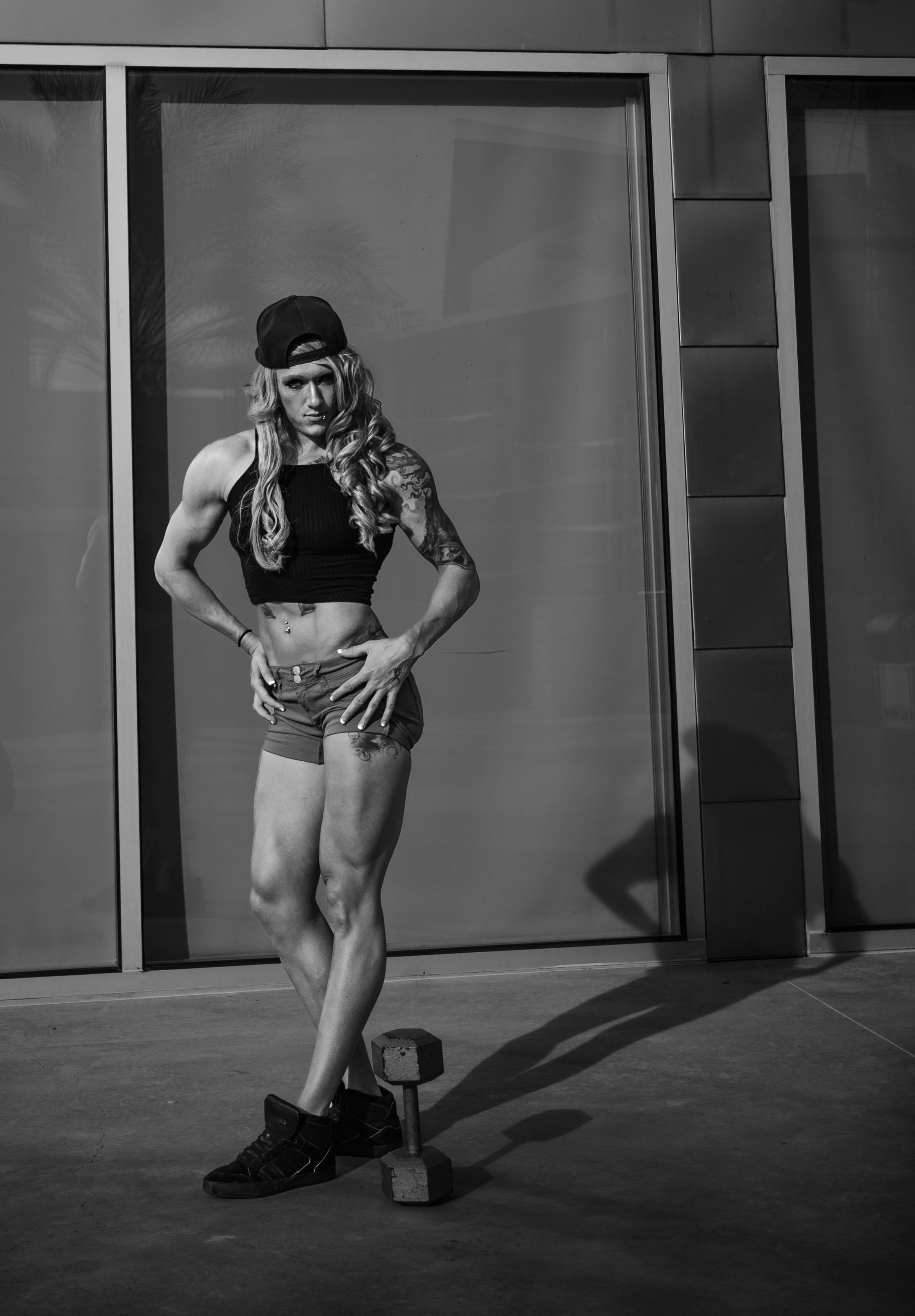Effective Ways to Improve Your Bench Press with Dumbbells in 2025
The bench press is a cornerstone exercise in strength training that targets the upper body, particularly the chest muscles (Brustmuskeln). Incorporating dumbbells (Kurzhantel) into your bench press routine can enhance not just strength but also stability and coordination. In 2025, as fitness evolves, so do the strategies for maximizing your workout efficiency. In this article, we will explore effective ways to improve your dumbbell bench press, focusing on exercise techniques, workout plans, and tips that lead to optimal health and performance results. Whether you’re a beginner or an experienced fitness enthusiast, understanding these methods will help you achieve your fitness goals.

Essential Techniques for Effective Dumbbell Bench Press
Understanding the Proper Form
Before diving into the workout, it is crucial to grasp the proper technique for executing dumbbell bench presses. Start by lying on a flat bench with a dumbbell in each hand. Keep your feet flat on the ground and engage your core for stability. As you press the dumbbells upward, ensure your elbows remain slightly bent to keep stress off the joints. This foundational movement minimizes strain on the shoulders while effectively targeting the chest (Brust) muscles, ensuring that your workout sessions are productive.
Focus on Movement Patterns
Focusing on movement patterns engages not just the target muscles but also increases functional strength. As your strength progresses, incorporate variations such as incline or decline dumbbell presses into your routine. This not only targets different muscle fibers in the pectoral muscles (Brustübung) but also enhances your overall lifting capability. These variations can improve your muscle definition while also contributing to a balanced physique.
Implementing Mindful Practice
In 2025, the emphasis on the mind-body connection in fitness is crucial. Practicing mindfulness during your dumbbell bench press can help with increased awareness of muscle engagement and body positioning. Concentrate on the sensations in your chest as you lift the weights and adopt techniques such as controlled breathing. These techniques can enhance not just your performance but also your motivation and focus during workouts, aligning with the fitness psychology principles deeply rooted in training philosophies today.
Importance of Progression and Variety
Progressive overload is a key principle in strength training. Gradually increase the weight or the number of repetitions you perform each week. Incorporate advanced techniques such as supersets or drop sets. Such strategies not only prevent monotony but also maximize muscle growth and endurance. These methods are pivotal for anyone looking to transition from basic to advanced training routines, ensuring continuous development and alignment with your fitness objectives.
Warm-Up and Cooldown Techniques
Integrating a proper warm-up routine is paramount to prepare your muscles for the intensity of a bench press workout. Dynamic stretches that focus on the chest, shoulders, and overall upper body will enhance your range of motion and blood flow. After completing your workout, engage in cooldown exercises. This includes static stretching targeting the chest and shoulders, helping reduce muscle tension and aid recovery. Such mobility practices are vital in ensuring a well-rounded training approach that prioritizes injury prevention and muscle recovery.

Optimizing Your Dumbbell Bench Press Routine
Creating a Balanced Training Program
A comprehensive training program is essential for improving your bench press performance. Incorporate exercises such as push-ups, tricep extensions, and shoulder presses to enhance overall upper body strength. Balancing muscle groups within your training ensures that your chest is supported by equally strong triceps and shoulders. Moreover, consider your fitness levels and adapt your routine accordingly, whether you’re a novice or seeking to elevate your expertise in powerlifting.
Finding the Right Equipment
Choosing the right dumbbells is also significant. Opt for adjustable dumbbells, which allow varied resistance levels without cluttering your workout space with multiple weights. This choice is crucial as it accommodates your progress in strength and enhances workout flexibility. Fitness enthusiasts in 2025 also favor ergonomic designs that promote safe handling and prevent injuries, aligning with modern sport science principles.
Utilizing Technology for Training Feedback
Today’s fitness landscape is increasingly influenced by technology. Utilize wearable devices or apps that monitor your heart rate and track your progress during workouts. This feedback aids in setting realistic fitness goals and optimizing your training intensity to match cardiovascular benchmarks and strength parameters. The incorporation of data in fitness routines is essential for remaining compliant with your training strategies, thus enhancing effective workouts.
Engaging with a Training Partner
A training partner can increase accountability. This relationship can motivate you to push through plateaus and maintain correct form during your lifts. Additionally, spotting each other is crucial for safety, especially when progressing to heavier weights. By sharing training experiences, you can foster a more engaging and supportive training environment, benefiting from shared knowledge and encouragement.
Adapting and Evolving Your Strategies
The fitness journey in 2025 is highly personal and adaptive. Regularly reassess your training goals and adjust your strategies based on observed progress. Engaging in diverse fitness classes or working with personal trainers can provide new insights and encourage innovative strategies for your dumbbell bench presses. The pursuit of improvement is a continuous journey, highlighting the importance of flexibility in training programs.
Monitoring Your Progress and Results
Keeping Track of Your Workouts
Documenting your workout sessions allows you to monitor improvements carefully. Keeping a journal or using fitness applications helps identify successful techniques and areas needing focus. Consider tracking metrics such as weights lifted and sets completed, as this data can highlight trends and progress in your strength training. By correlating these metrics with your fitness goals, you can find motivation to push past barriers.
Setting Realistic Goals
Goal setting is a powerful motivator in any training program. Establish clear and achievable goals related to your bench press performance, such as increasing weight lifted or improving repetitions within a set timeframe. Visit your progress checkpoints regularly, and don’t hesitate to celebrate small wins along the way, which can boost your confidence and motivation to tackle more challenging objectives.
Adapting to Feedback and Results
Using progress feedback to adapt your training regime is key to continuous development. Analyze your performance data to identify strengths and weaknesses, shaping your upcoming workouts to enhance those areas. For instance, if you observe stagnation in weight lifted, consider introducing a new variation or altering workout techniques. This proactive approach to fitness allows you to capitalize on your training and avoid frustration from unfulfilled expectations.
Sharing Your Fitness Journey
Engagement with the fitness community can enrich your training experience. Consider sharing your journey through social media platforms or local fitness classes, inspiring others while also gaining valuable advice from peers. The exchange of ideas can lead to varied perspectives and suggestions that may improve your practices, reflecting the spirit of collaboration within the fitness community.
Seeking Professional Guidance
For personalized advice, engaging with a personal trainer can be immensely beneficial. Their expertise can offer tailored workout plans that complement your unique fitness objectives and levels. As you progress, professional trainers can help adjust your routines to reflect changes in your goals, ensuring you are always moving toward peak performance while minimizing injury risk.
Common Challenges and Solutions
Addressing Muscle Tightness and Pain
Many weightlifters experience muscle tension or soreness after training sessions, especially within the chest and shoulder areas. To alleviate discomfort, prioritize stretching and foam rolling as part of your cooldown routine. Implement regular mobility sessions into your regimen to enhance flexibility and decrease the likelihood of muscle injury. Incorporating these recovery strategies into your workout plan is essential for long-term success and muscle health.
Injuries and Prevention Techniques
Preventing injuries is crucial in any weight training program. Concentrate on maintaining proper form throughout your lifts, and avoid lifting weights that feel excessively challenging, especially when fatigued. Ensure that your muscles are properly warmed up before heavy lifts, and consider integrating injury prevention exercises tailored to your needs and fitness levels. Awareness of personal limits contributes substantially to safer exercise environments.
Overcoming Plateaus
Plateaus can impede progress and lead to frustration. To overcome these periods of stagnation, vary your workout routine regularly. Rotate between different exercises, adjust your sets and repetitions, and modify rest intervals. Such variations stimulate muscle adaptation and prevent mental burnout. Adopting a flexible approach allows more exploration and adaptability in your strength training journey.
Maintaining Consistency
Consistency is a vital ingredient in achieving strength training goals. Create a schedule that aligns with your lifestyle, making fitness a routine part of your life rather than a sporadic undertaking. Engaging with fitness communities can also reinforce commitment by providing support and motivation. Setting reminders or establishing workout buddies can further instill accountability within your training practices.
Motivation Management
Maintaining motivation can often be challenging. Incorporate motivational strategies such as setting benchmarks and rewarding yourself for progress. Surrounding yourself with positive influences and engaging with like-minded fitness enthusiasts can also enhance your outlook on training. In times of lower motivation, reflect on your achievements to reignite inspiration and commitment to your fitness journey.
Q&A Section
What is the best way to start using dumbbells for bench press if I am a beginner?
Begin with lighter weights to master your form before gradually increasing resistance. Consider the routines provided by fitness professionals, as this guidance will facilitate a more structured approach without overwhelming you.
How often should I train my chest with dumbbells?
Training your chest ideally 1-2 times a week is recommended, allowing ample recovery time in between for muscle growth and strength development. Focus on balance with other muscle groups in your training regimen.
Can I do chest press exercises without a bench?
Yes, you can perform standing chest press exercises using dumbbells, which also engages your core. This approach can help enhance stability and coordination during workouts.
Should I include cardio in my bench press workout routine?
Including cardiovascular exercises complements strength training and helps maintain overall fitness. Integrating short cardio intervals can bolster endurance, especially when preparing your body for more intense strength workouts.
What are common mistakes to avoid when doing dumbbell bench presses?
Common mistakes include using excessive weight, neglecting proper form, and not engaging the core. These errors can lead to injuries and hinder progress, making attention to technique imperative for effective training outcomes.
Explore more information about fitness routines and effective balanced training on this link and enhance your knowledge with related fitness topics at this link.
